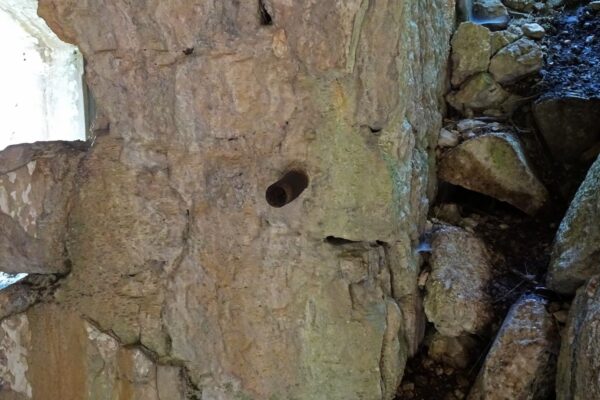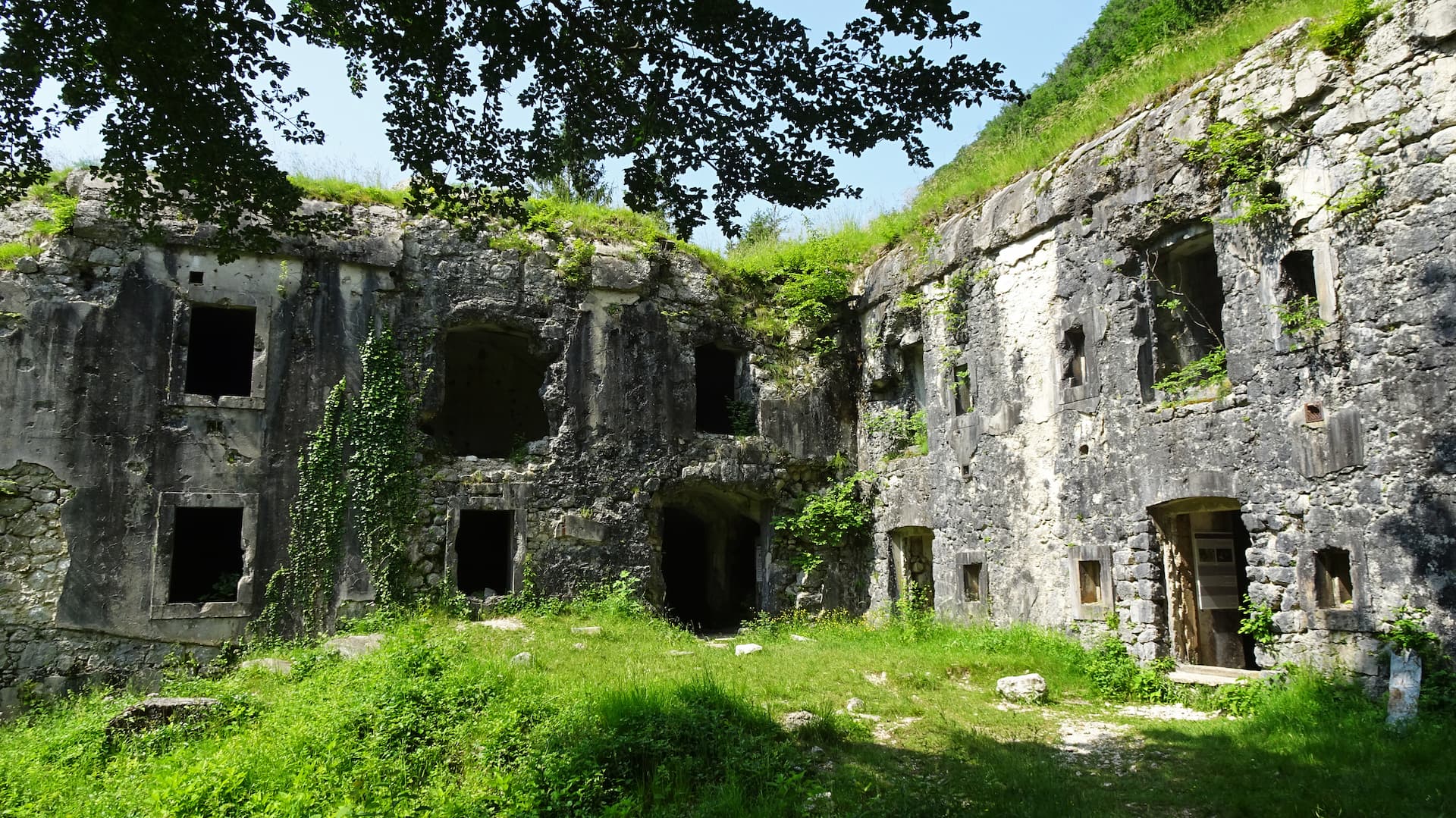
15 Jun Fort Hermann
The mighty Hermann Fortress stands above the Koritnica gorge like a silent witness to the turbulent history of the Soča Valley. Built in 1897, this fortress was part of the Austrian defense system against the Italian army, with the clear purpose of defending the Bovec Basin and controlling the vital road through the valley. It was named Hermann, after Field Marshal Johann Hermann von Hermannsdorf. He was the commander of the fortress at Predel pass and fell in battle against the French army in 1809. But the story of this place stretches back much further.

A GUARDIAN OF THE PAST
Long before the Austrian army arrived, this valley was a strategic passage between the mountains and the sea. Merchants, armies, and travelers used this route for centuries. Where the Soča and Koritnica rivers meet, people built fortifications to protect their land.
The first fortress here was built in the 15th century, during the Venetian-Turkish wars. It was known as Kluže Fortress. In the 19th century, the Austrians expanded the old walls and built a new fortress higher up the slope to strengthen the defense system.
Before construction on the new fortress could begin, a daring access road had to be carved out of the mountainside. This mountain road winds along the sheer cliffs of Rombon, climbing steadily toward the fortress. To bypass the most dangerous sections above the Koritnica gorge, engineers first had to build a tunnel. Its size was dictated by the massive loads it would bear—10-ton steel gun shields and 13-ton armored mortar domes. Today, only a few roadside markers remain to hint at this once crucial supply line. Much of the old retaining wall has crumbled, and a torrent has swept away part of the path near one of the sharp switchbacks, leaving only traces of this feat of engineering.
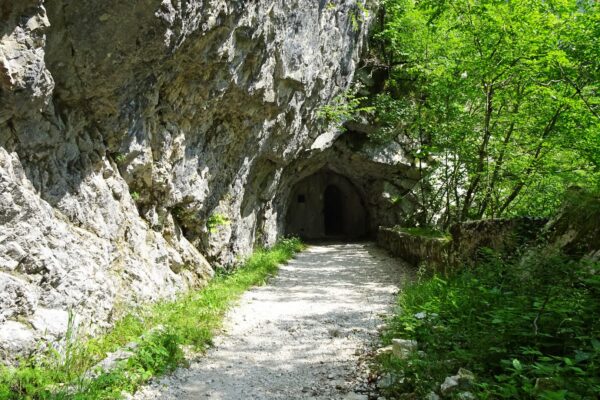
A STRATEGIC STRONGHOLD
Hermann Fortress was no ordinary outpost. Perched on a rocky ledge, it controlled the narrow pass below. With thick stone walls, underground tunnels, and commanding views, it was nearly impregnable. Its artillery boasted a range of almost 7 kilometers, a staggering distance that underscored the might of its weaponry at the time.
Soldiers lived and trained here, ready to repel any enemy crossing the Koritnica gorge. Life at the fortress was harsh and lonely, especially during long and bitter winters. Yet, the fortress was surprisingly advanced for its era: it was equipped with electricity and running water, which were rare luxuries in such a remote mountain stronghold.
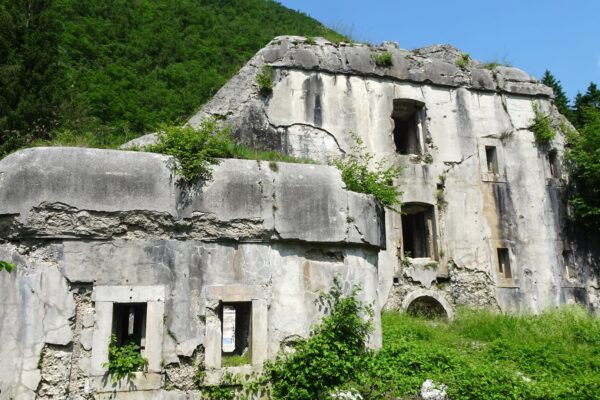
THE TRAGEDY OF THE FIRST WORLD WAR
When the First World War broke out in 1914, the fortress was once again at the center of conflict. The Soča Front, known as the Isonzo Front, was one of the most brutal battlefields of the Great War.
In 1915, the Italian army attacked the Austrian positions along the Soča River. Fierce battles raged for months. Artillery fire echoed through the mountains, and the slopes turned red with blood.
Hermann Fortress was heavily bombarded, primarily by artillery fire from Italian positions at the Nevejski Prelaz (Passo del Nevea). More than 2,000 grenades were fired at the fortress, yet only about 50 of them actually hit their mark, leaving much of the fortress still standing amidst the destruction. Despite its thick walls and clever design, it could not withstand the modern firepower, and parts of the fortress were reduced to rubble. After the war, the fortress was abandoned and left to decay.
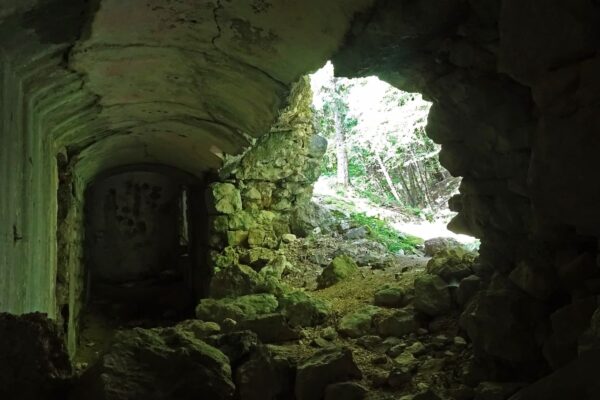
A PLACE OF MEMORY AND BEAUTY
Today, Hermann Fortress stands in quiet ruins. Its walls are broken, and grass grows between the stones. But for those who visit, the fortress still tells a story of courage and survival.
Climbing to the fortress is an adventure in itself. The path winds up through the forest, and at the top, you’ll find breathtaking views of the Soča Valley and the surrounding peaks.
The fortress is a reminder of the resilience of the people who lived and fought here, and of the beauty that endures even in the aftermath of war.
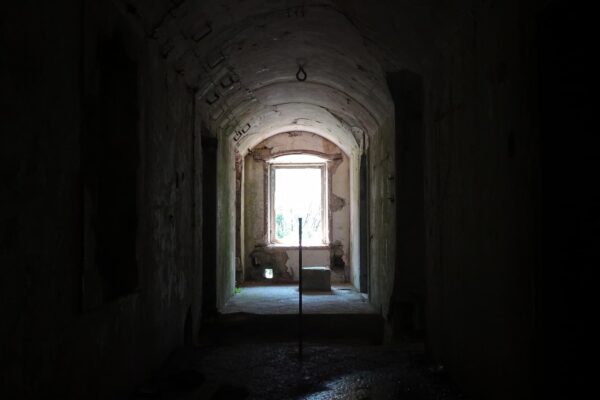
TOP 10 THINGS TO SEE
1. THE IRON LADDER TRAIL
Originally built to ensure access to the fortress even if the main road was cut off or shelled by enemies, this narrow iron-ladder trail hugs the cliff face. Fortunately, the Italians never broke through the Austro-Hungarian defenses, so it was never used in battle—only for training exercises. The ladder can be seen on the left side at the foot of the path leading up to Hermann Fortress.
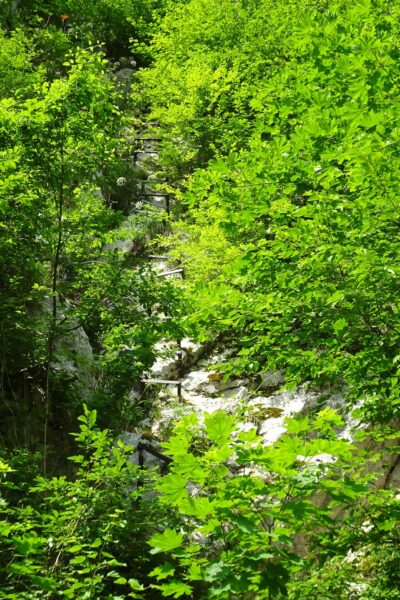
2. THE TELEPHONE CABLE HOLDER
Along the old road—now a hiking path—carved into the rock face, you can still spot a beautifully preserved wrought-iron bracket that once carried the telephone cable to the fortress.
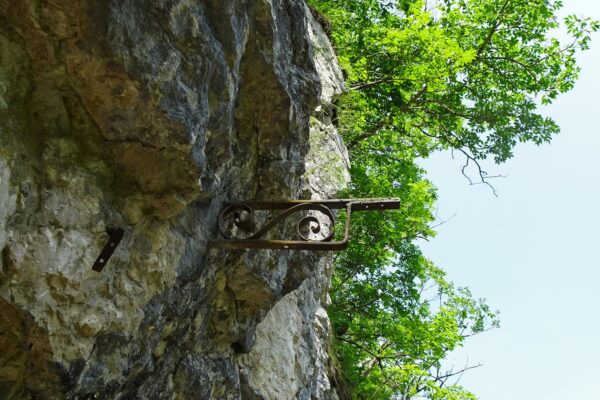
3. MEMORIAL PLAQUE
Carved into the rock along the path is a plaque that reveals which unit started building the road: the Imperial-Royal Pioneer Battalion No. 4 (K.K.P.B. No. 4). The plaque also marks the year construction began (GBT 1897). Soldiers were soon recalled to other duties, and the road was completed by a local civilian contractor from Bovec. Over time, water erosion has worn away the inscription, leaving only faint traces of what was once clearly carved into the stone.
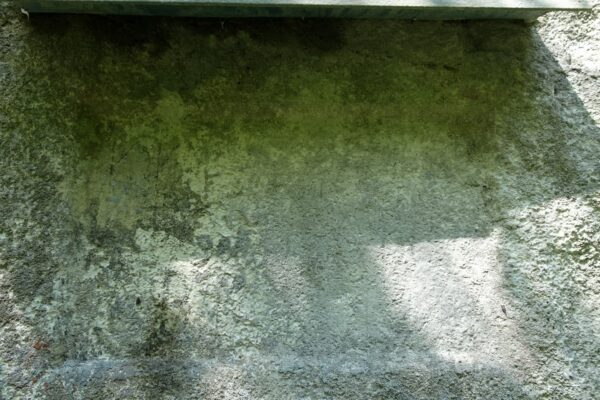
4. ROCK-CARVED BOUNDARY MARKER
The land purchased for the construction of Hermann Fortress was defined by 26 boundary points, all of which were marked on-site. The sixth marker is still visible today—carved into the rock face along the cut beside the access road.
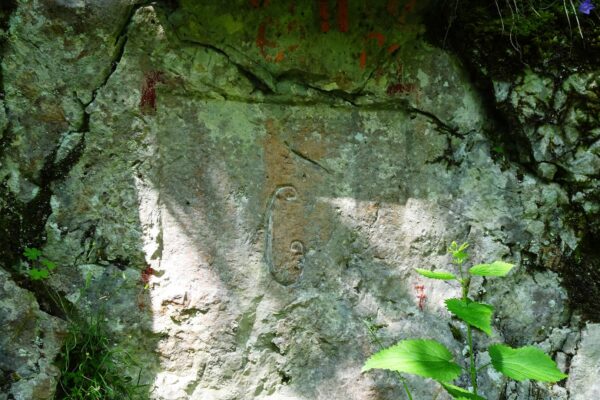
5. ARMORED DOMES
Four round openings, edged with granite, can still be seen on the roof of the fortress. The two larger ones once held rotating domes with mounted cannons, while the smaller ones housed armored observation domes. Unfortunately, the metal structures have not survived—only the gaping holes remain as silent reminders of their former power.
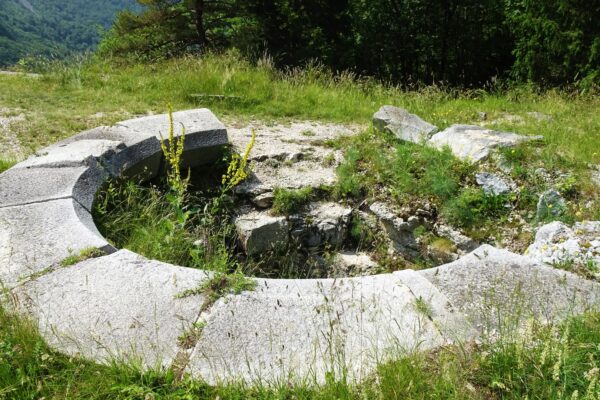
6. THE NICHE FOR TELEPHONE EXCHANGE
The fortress’s telephone exchange connected Hermann Fortress with Kluže Fortress, as well as with the state telegraph cables running through Tarvisio, Bovec, Gorizia, and even Trieste and Klagenfurt. Only the niche for the switchboard remains today, but you can still see the cable brackets and the dark stains they left behind.
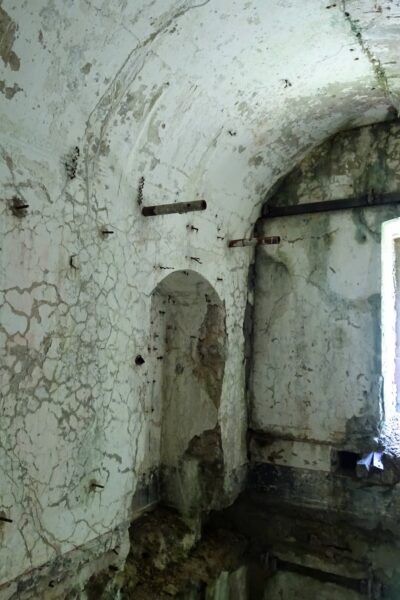
7. THE CAST-IRON STOVES
Winters in the fortress were harsh, so 13 cast-iron stoves provided much-needed warmth. The indentations in the floors where these stoves once stood are still visible. In one of the soldier’s rooms, hooks for hanging bread shelves remain intact.
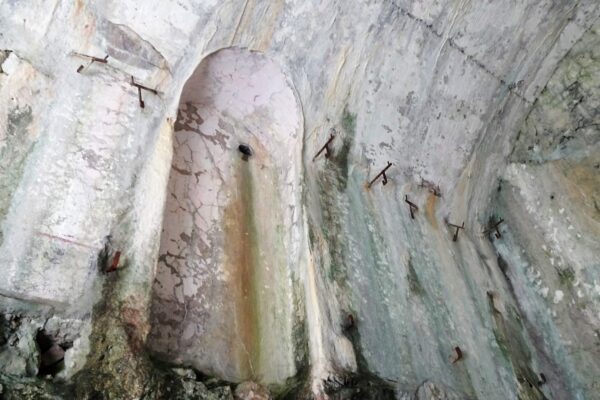
8. THE LEFT CAPONIER AND TUNNEL ENTRANCE
On the left side of the fortress—facing Bovec—stands the caponier, a fortified gun emplacement designed to defend against infantry attacks. During World War I, an Italian shell nearly destroyed it. In the center of the caponier, a vertical shaft leads to an underground tunnel (poterno) that connects the fortress to three caves (kavernas) in the cliff below. The tunnel remains accessible to this day.
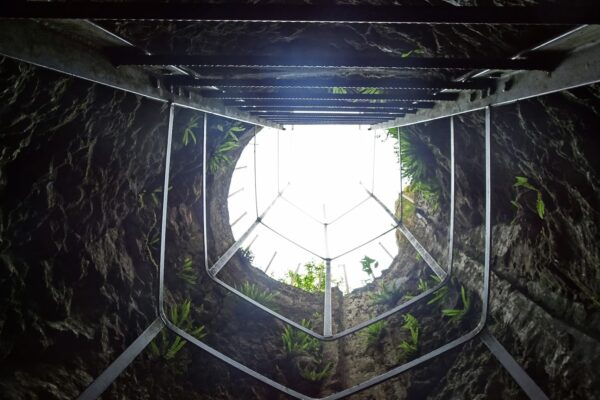
9. VENTILATION SHAFTS
The larger rooms in the fortress were ventilated through vertical shafts that brought in fresh mountain air. The openings were protected by mesh covers, some of which are still visible. Sadly, the steel shields that once sat above these openings are missing—but you can see them at Kluže Fortress.
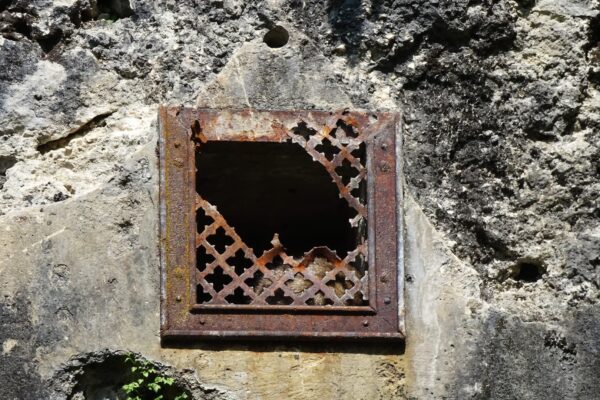
10. THE SPEAKING TUBES
For efficient communication, the fortress was equipped with speaking tubes—metal tubes that carried the commander’s voice to different parts of the fortress. In one of the rooms, five of these speaking tube fittings remain, and remarkably, they still work today.
